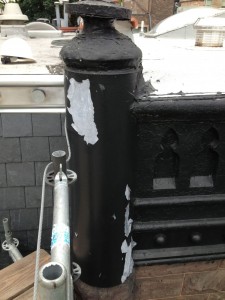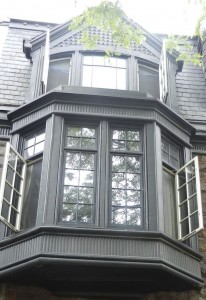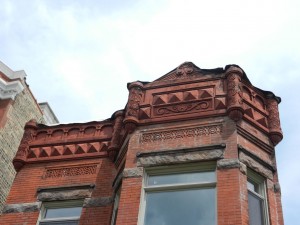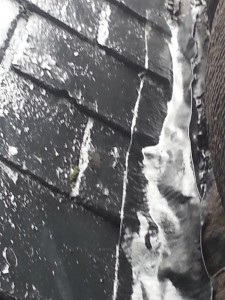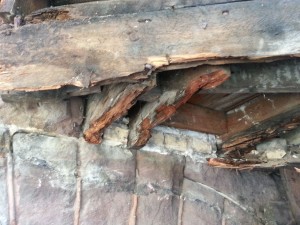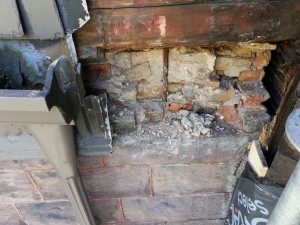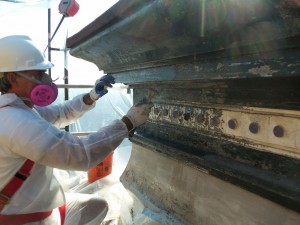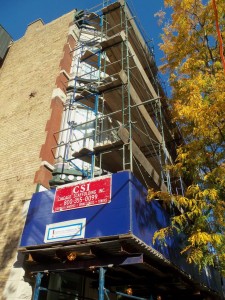Chicago is well endowed with vintage masonry buildings that boast elaborate cornices and bay windows. Most of these buildings were built in a thirty-year period, ranging from the latter part of the1880’s to late in the1910’s. Some of these buildings were commercial in nature and were erected right next to the sidewalk. Others were residential and were often set back on the property. In either case, the maintenance of the metal ornamentation required the erection of scaffolding. Because of the high cost of creating safe access, the maintenance of the metal surfaces was often neglected for decades, often compromising the integrity of the metal structures. When the paint job looked bad enough, the owners often did the cosmetic work, but cut short the metal repair work. In doing our metal restoration work, we have encountered numerous situations where duct tape had been used to cover a hole and painted over.
This summer, we were contracted to restore the metal painted surfaces on two sides of an 1890 brick Victorian corner house. As shown in the picture, from a distance, everything appears pretty normal. However, a close inspection revealed that the metal surfaces had seriously corroded, split apart or fallen off in numerous places. These openings had created many points of access to water, as well as creating numerous habitats for birds. In all, about forty repairs had to be performed. In some cases, some pieces had to be fabricated to replicate the surrounding patterns. Some pieces had to be welded in place. For other pieces, rivets were used to secure them in place. We attached before and after pictures for your reference.
All the repairs were made using galvanized steel. As house painting contractors, before painting the new metal, we prep the steel by degreasing it and then priming it with an appropriate primer. Then we paint!
The clients that hire us see it as their duty and privilege to restore their “piece of history”. For us, doing this kind of work is our contribution to the preservation of Chicago’s architectural heritage.







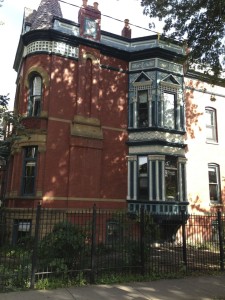
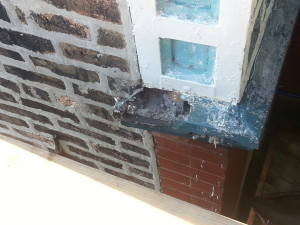
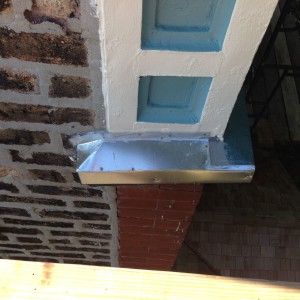
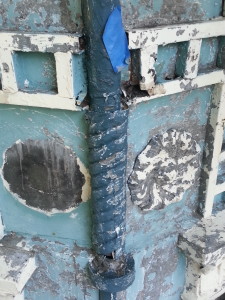
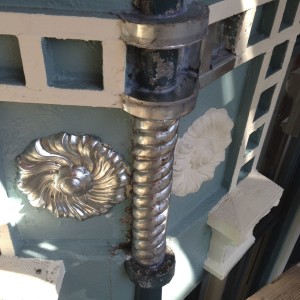
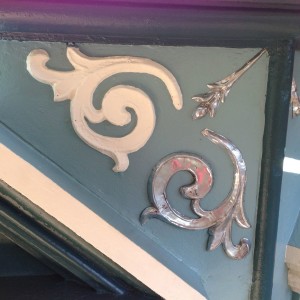
 Follow
Follow


